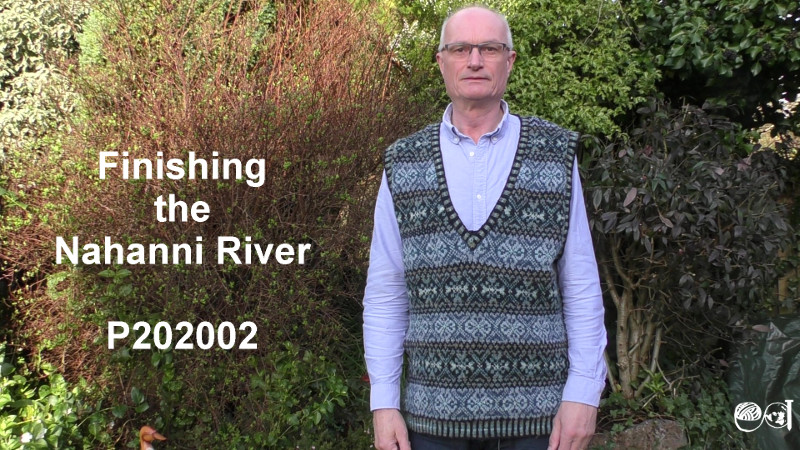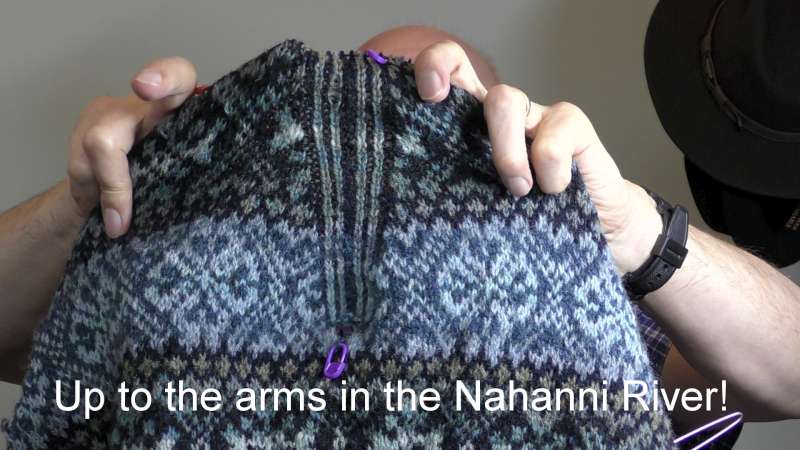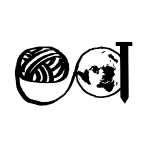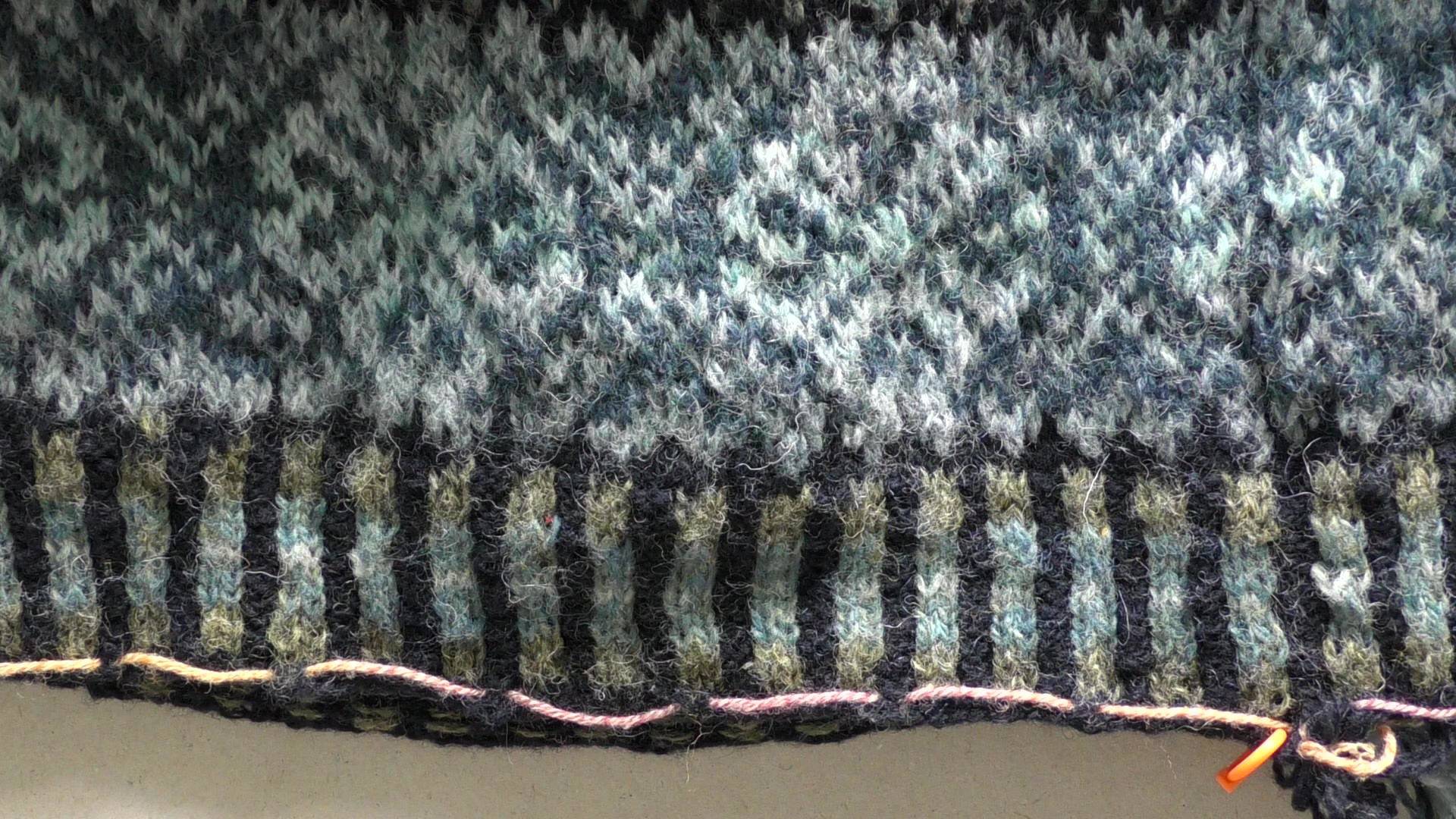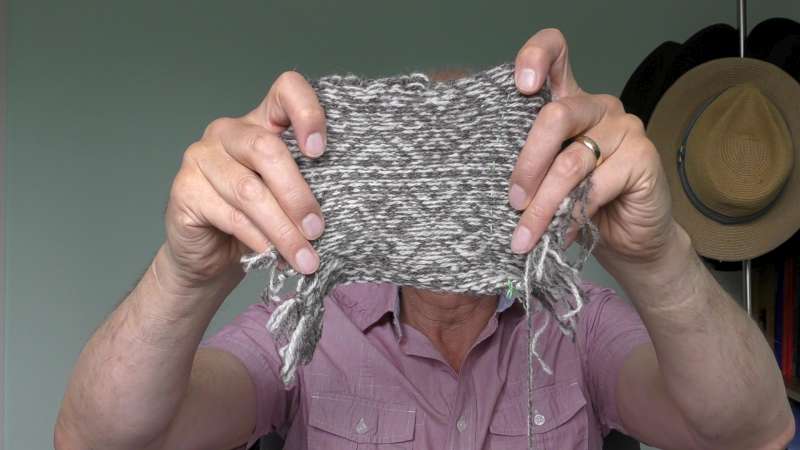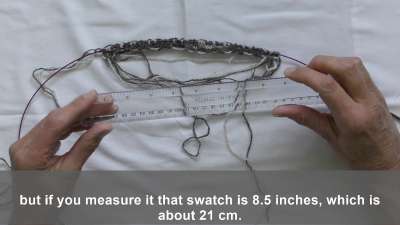This is the fifth and final podcast in a series about how I knit the Nahanni River vest designed by Betts Lampers and published by Simply Shetland. In it I show how I knit backwards for the short rows, how I reinforced and cut the steeks and how I picked up and knit the stitches for the arm holes and neck band. I also show you the final garment, and talk about the lessons I learned while knitting it.
Audio only version:

Transcript
The headings in this transcript link to the point in the podcast where that topic starts. This transcript has been edited to correct errors and to clarify phrasing.
Introduction
Hello I’m Steve, also known as Teabreak Knitter on social media.
This is the fifth podcast in a series that shows you how I’m knitting the Nahanni River vest. This is a pattern by Betts Lampers and published by Simply Shetland. The yarn I’m using is Spindrift from Jamiesons of Shetland.
In the first podcast I showed you how I read the pattern to find out what I needed to do and any techniques I needed to learn, how I chose the size I wanted to knit, and how I was planning to do the gauge swatch.
In the second podcast I showed you what I had learned from the gauge swatch. I showed you how I had cast-on for the project, and how I joined in the round.
The third podcast was on how to use charts for colour work, how I knit in two colours, how I did the cartridge rib [corrugated rib], and how I do the Fair Isle knitting.
In the fourth podcast I showed you how I was knitting the body and the progress I had made with that. I showed you how I started the steeks, and how I was going to do the decreases the for armholes.
This is the fifth podcast and it’s the last in the series. It [covers] how I finish the project. The techniques that I was going to have to use, like knitting backwards, reinforcing the steeks, picking up stitches, cutting the steeks, and then dressing the final project. I’ll show you what it looks like at the end.
One of the things I did as I was knitting was to [done to] help me find where I was in the pattern when I started each round. On the round that I finished decreasing for the armholes, I marked on the chart where the start of the round was going to be for the patterns [motifs]. This was particularly important when I passed through a section of the motif that had a 4 stitch repeat and then progressed on to a 24 stitch repeat [in later rounds]. But that was several rounds [rows] later, so trying to work out where you were within the 24 stitch repeat was quite difficult. Marking where it was on the edge of the chart made it very easy.
And similarly when it came to the neck band, you could use the symmetry to find out where you were in the chart to pick up [restart after the steek] from that. That’s one thing I did as I was moving up.
Having found that useful, when I came towards the end of the project, where you had finished knitting up the arm holes, finished at the neck, and you came to the shoulders,where there is a short stretch of short rows. I found it very useful to mark up on the chart where each section of the short row started and where it finished. Again that save me from searching for I was in the pattern where there was a change from 4 to 24 stitch repeat. The other thing this did was that it showed that I had slightly misinterpreted the pattern, so that I was going to put the neck slightly offset, by only a couple of stitches, so you probably wouldn’t have noticed, but by marking on the pattern where the rows were [starting] and ending, I could see that I was going to put the stitches on hold for the neck off-centre. That was good because it saved me making a mistake that would have been really annoying if I had found that later on.
Finished knitting the body
I have now reached the end of the main knitting for this project, so I’ve finished the short rows at the shoulders. I’d like to show you where I have got to so far, and make some comments about what I did to get to here.
This is the front, the start of the V-neck is down there, we have got the two steeks for the arms on the side, and the V-neck comes up the middle here. As you go up you are doing decreases at the arm hole side. But after a while you do no more decreases.
To help me find my place when I starting each round, after the end of the armhole decreases I marked on the chart where the start of each round would be, so that would be on this side, The start of each round. The reason for doing that is that at several points in the motif you go from a repeat of 24 stitches to a repeat of 4 stitches, which is fine when you going from the big repeat to the small repeat you can tell where you are very easily when you start the round. But when you go from the four stitch repeat to to the 24 stitch repeat then there’s no very quick indicator of where you should be starting the round, and you have to look back down to the next 24 stitch repeat. That takes time. That is a bit fiddly. I marked the chart to show me where that was happening.
Of course, when you come the other side of the steek for the V-neck, you have exactly the same issue: where do you restart the 24 stitch repeat? that’s where the symmetry comes in useful, because all you have to do is look where you finished the run-up to the streek, on the other side, you start off with a pattern in mirror image, which makes it very easy to find where you are in the chart and to continue. That was a very useful thing, and it’s speeded up knitting considerably. The other thing, of course, that speeded up the knitting is that, as you go up, you are continuing with the neck decreases, so you end up with far fewer stitches that at the bottom than near the top. At least, that’s what happens at the front. At the back you continue right the way up to the start of the short rows with the full width.
Knitting backwards
The first technique I want to show you in this this video is the technique I use for knitting backwards.
Knitting backwards is not essential, but what it does mean is that you are knitting with the public side of your work always facing you, which one you are using a colour pattern is very useful because you can then more easily compare what you are knitting with what is in the chart.
So this is how I go about knitting backwards. Here is a [stocking stitch] swatch and I’m going to show you how I knit backwards. The first way I’m going to show you is how I knit backwards in the equivalent of the English style. This means I’m going to hold the yarn in the same hand as the needle that receives the stitches. I am going to wrap my yarn around the little finger and put it over my index finger. I insert the needle through the back of the loop knitwise, wrap the yarn, and I have knit the stitch. Again. Left-hand needle through the back loop of the [stitch], wrap it [the yarn] round the needle from the back left, round the front to the top right, and you form the stitch. You are wrapping it in the same direction as you would if you knit normally. So again. Into the back. Wrap round and form the stitch. Into the back. Wrap round. Form the stitch. 1, 2, 3, 4, 5. I’ll keep going until I have done 10 stitches. 6. Into the back of the loop, round, make the stitch. Two more. In, round, off. Into the back, round and off. That’s 10 stitches on the needle. 1, 2, 3, 4, 5, 6, 7, 8, 9, 10.
I’ll now show you how to do that continental style. Continental style is when you hold the yarn in the opposite hand to the receiving needle. If I was knitting normally I’d be knitting from left to right. Now I’m knitting from right to left. Once again, insert the needle into the back of the stitch [pointing towards the back] move the yarn round the needle from back left, cross the front to the right. Again. Insert the needle at the back of the loop [in front of the back leg] wrap the yarn round the needle, and knit. I’ll now do that using the Continental picking technique. You can see most of the movement is being done with my left hand. In through the back, round, but taking [the stitch] off the needle I’m doing with right needle. That’s probably because I’m right-handed. Into the back loop, wrap by picking, take it off the front. Into the back loop, off. That’s the end of that row.
So I’ve now got a knit row that was knit English and Continental.
Short rows
The pattern has got short rows – I will pull that down slightly so that you can see here.
Here is the top row in the arm hole side of the shoulder and here is the top row at the neck side of the shoulder. And so you are getting two, two and a half, three centimetres there (an inch and a quarter). You can see that by following this row here, and you can see there is considerably more fabric there that there is on that side
If you are eagle-eyed, you can just see a loop of it here, when I reached the end of the bulk of the knitting and started the short rows, I did put in a life-line for two reasons: first of all, in case I made a mistake in doing the short rows themselves, and secondly because for the top, the short row sections, I used knitting backwards, so on the first round [row] I went [passed the stitches] left to right as usual.
You are knitting flat for this section, so on the way back, instead of turning the work and purling, I kept knitting, but knit from left to right [passing the stitches from right to left], then from right to left. That was a way of practising doing that, and it has turned out reasonably OK.
Remember that I have not yet blocked this.
The other thing I did in preparing for these short rows was, learning from what I did down here, and how difficult it was sometimes to work out where I was in the pattern, it becomes even more difficult on the short row to find where you should be in the pattern, so on the chart, I marked for each of these short rows where I should start after the steek and where I should do the turn, so that I knew exactly where I was on the chart. So I didn’t need to look back and up to work out where I was. That, of course, gets particularly difficult if you are near this edge here where you have several different parts of the motif that are not complete, so on the left here you have more vertical components of the motif than you have on the right here.
If I turn it over on the back, although the pattern goes through with just the arm hole decreases, and no V in the back, when you get to the short rows on the back, you do take some stitches off and hold them ready for the neck band. Here are the shoulder short rows, and there is an extra steek in the middle there. So you knit those as “long” short rows rather than “short” short rows.
So that is how I knit backwards. The final step before handling the arm holes and the neck was to do a three needle bind-off [joinery cast-off] on the shoulders. This gives a very neat shoulder join.
o I did the three-needle bind-off, and then I was ready to reinforce the steeks. Reinforcing the steeks is important because this is what stops you pulling the yarn through the steek after you have cut it when you are working with the project. When you have finished, it is fine. It will very rapidly stabilise. But it is when you are pulling or tugging on the yarn that you stand a risk.
Reinforce the steeks
This is how I reinforced the steeks.
The first thing I want to do is create a slip knot so that the crochet chain can be started. So I wrap the yarn round my thumb, put it onto my finger, and put that working yarn through the loop and pull it tight. So, I have now got a loop there.
It’s easier to work so that you working across your item [rather than up-and-down], and I’ll be working from right to left because I’m right-handed; if you are left-handed you might prefer to work in the other direction.
The first thing I want to do is to make sure I catch the cast-on [or bind-off, if I working from left to right] edges. So I can put the hook through both those stitches, wrap the yarn round it, and bring it through. You will notice that I’m using a thinner yarn than the yarn I used to knit the swatch. This avoids adding bulk to the steek. Having pulled it through you can make a loop. That’s the cast-on edge caught.
I now want to catch that stitch to that stitch, so I go across.
We start off and the first two are in the same colour. I push [the hook] under that leg, the leg that is closest to me, and up under the leg that is furthest from me. Wrap the yarn around the hook, pull it through, pull that through, and another loop, and pull that through. So we have now trapped that yarn there.
I’ll see if I can give you a closer look at that. You can see there that the yarn is trapped.
We now go on to the next stitch. I have changed the yarn to the other hand because I have now got an established loop.
So I go under the far leg of the stitch that is closest to me, and through and up under the stitch that is further away from me. Under that first leg of the stitch, pull it through, and then catch again, and pull it through again to make sure everything is bound tightly.
I’ll show you that step by step.
The next stitch. Here’s the second stitch away from the [centre of the] steek. Go under the far leg of that, keep going under and then [past the first leg] and [up] through the [centre of the ] of the stitch next [to the centre of the steek]. Hook the yarn with the crochet hook, pull it through both stitches, and then pull it through the loop that is already on the hook, as you can see you have still got those stitches free. You now pull that loop through there, make another loop and pull it through, and you have now trapped those stitches.
Keep going like that all the way up the steek.
At the top here, just tucked under the cast-off [bound-off] stitch, here’s the final pair of stitches. Down, up, catch the yarn and pull it through, pull it through that loop, catch it again, and pull it through that final loop.
And now we have now reached the cast-off edge. So now I want to catch those loops as well. Put it [the hook] through both of those loops, catch the yarn, pull it through, pull it through the loop on the hook, catch the yarn, pull it through that loop, and you can see it has now caught those stitches.
Now we can snip the yarn off, then continue pulling it through the loop as you would for [binding-off in] knitting.
You have now trapped that edge with a crochet chain.
So that is how I reinforced the steeks, although the pattern does not actually call for you to reinforce them at this stage, but I like to do it now because I’m going to be picking up stitches around the arm holes, around the neck, and that is going to put quite a bit of stress on the fabric there.
Pick up and knit stitches
So the next thing I want to show you is how I pick up the stitches.
I’m going to show you three ways of picking up a stitch, [to produce exactly the same result]. When I say pick up a stitch I’m going to pick up and knit the stitch.
This is the edge stitch row [column!] that I want to pick up. I have knit from bottom to top.
I have here the steek, so the edge stitch, and here are the steek stitches. I want to pick up so that my knitting comes out from this position, so that the edge of the garment or fabric is there, and the new edge grows out from that point onwards.
The first approach I want to use, that I would like you to see more clearly what’s happening, is I’m going to use two needles. I’m using a [silver metal] needle smaller than was used to knit the fabric. This is going to help me lift the stitches, and here is the [black with silver tip] needle that I’m going to knit on to. And again, in this particular case it’s slightly smaller than the one I used to knit the fabric. Sometimes you might want to do this because it makes it easier to adjust your stitches from that, on the first round you knit after when the one you pick-up. I’m going to knit and wrap my yarn as usual.
I’m holding the yarn in my right hand, because I will be doing most of the manipulation with my right hand.
Here is that first stitch, that first edge stitch, the first stitch in the steek. I’m going to push this needle right the way through [under] that stitch [under both legs] and also catch the float underneath. That’s to hold the stitch, so that I can now put my needle in and knit the stitch. Do that again on the next one. Put the needle in [under the edge stitch] and knit the stitch.
Now, because this is stockinette, you use a pick up ratio of 2 to 3, I am going to skip a stitch. This time I’m going to pick the stitch up differently. I’m going to use a crochet hook.
Put the crochet hook through, underneath that edge stitch. pull the yarn through and put it [the new stitch] on the [needle]. Again, pull the yarn through with the crochet hook and put it on your needle. You want to mount it on the needle so that the working yarn disappears off across the back.
The third way I want to show you is just to use the right hand needle. Push it under the stitch and pull the yarn through. I’ll do that again. Lift that stitch with the needle, push [the needle] through and knit [the stitch].
I’ll come up a bit closer to the camera this time. Missing out that third stitch because of the 2 to 3 ratio. Put the needle through, wrap, and pull it through.
And now the final stitch. Put it through, wrap, and pull it through.
Before the steeks are cut
So this is the next step in my knitting. I have bound off the top edges with a three-needle bind-off [joinery cast-off], so the shoulder seams are done. I am now starting on the arm bands. When I have done the two arm bands, I will then do the neck as well.
So here we have the steek with the reinforcement. I’ve left the ends on there; I’ll cut them off after I dress the the final product, and I’ve gone through and I’ve picked up stitches all the way round in this dark background colour.
I’ve got several markers on this. This marker is on the sleeve to tell me where that top sleeve stitch is. I don’t really need that anymore, and here is the beginning/end of round marker. These two are marking the edge of the stitches that were held on the needle before, and again I don’t need those markers, and I will get rid of those when I knit round. These other markers are to [help me] correct the number of stitches that I picked up.
I picked up more stitches than I needed, because it is easier to reduce your stitch count than it is to increase them evenly. And so every time I meet one of these markers I will knit two stitches together, and that will bring me back down to the correct stitch count.
As you see, with the steek in place, there is no stretch there, so knitting the bottom and the top around there is going to be very, very difficult. I would need to use two [circular] needles or a huge loop. So instead, now is the time to cut the steek.
That is how I picked up the stitches. If you want a bit more information there is a link below.
I have now finished putting stress on those steek stitches, so it is safe to cut the steek now. Cutting the steek will change the shape of the garment totally. It will open up the arm holes, it will open up the V-neck. For the first time I will actually be able to see the shape and how it is going to fit.
Cutting the steeks
This is how I cut the steeks for this particular project.
I have here a steek with an even number of stitches. Here are the edge stitches, and here is the centre line along which I’m going to cut. Now, I have already reinforced the steek. If this were a real piece of knitting I would probably be joining a button band, or sleeve, or something like that, to this line of edge stitches. And, because joining something like that involves picking the stitches up, that puts quite a lot of stress on the stitches nearby, so I would actually pick up those stitches before I cut the steek. But this is a swatch just to show you how it works, and it’s a lot easier for you to see without anything on the edge there to hide what I’m doing.
This is is the swatch with a steek with an even number of stitches, and what I want to do is cut between the two central stitches, to cut up along this line here. I’m going to use a pair of sharp scissors.
And here we go.
There’s the line I want to cut up. I cut up the middle [between] those stitches.
And there we are, there is the steek cut.
And you can see a few ends on there because the whole stitch [was left behind] on either side. So that line of reinforcement is going to hold those stitches and stop them pulling out.
I am now ready to cut this steek.
So, here we have got the steek. Here are the picked-up stitches on the cable, with the needle. The edge stitch has been picked-up. Here is the first stitch in, the second stitch of the steek, the third stitch here is that right-hand leg, and you’ll see here [that] the left-hand leg is under the crochet and [let me pull that out a bit so you can see more clearly] here is the left-hand leg of the right-most of the two central stitches, and its right leg is also caught by that crochet. Coming across, here is the left-hand stitch, free right leg, left leg is crocheted together with the next steek stitch, and the dark, the light steek stitches, and once again on the other side there is the cable with the stitches picked-up on it. I am going to cut up between these two central stitches here.
I am going to take some sharp scissors, and I’m going to cut up the centre there.
I will put my hand on the inside of the fabric so I can be sure I don’t cut through the other side. I am going to start off by cutting at the bottom, between those two central stitches.
And keep going, making sure as I go along that it also cuts through the floats that might be going across the centre. Aiming to go between those central stitches This is not as awkward when you’re not trying to film, but I’m trying to watch your view as well is being able to see what I’m cutting.
It is a light coloured background here, which makes it easier to see the stitches.
Those yarns across the back are just the ends, and they have knit together a bit while I’ve been doing the rest of the knitting.
Almost at the end. And the last little cut or two.
That’s a steek cut now. I waited until I had picked-up the stitches, because that puts up a lot of stress on the steek stitches themselves, but I needed to cut the steek before I start knitting, because with an eight stitch steek but a 16 stitch or 17 stitch underarm to pick-up, you just couldn’t stretch the yarn enough to do that (knit that) in the round without having cut that steek.
One are the things that you can see, I will put that back together again, is is that you cannot see the steek. Because I picked up the stitches through [the edge stitches of] that steek, that steek automatically, by itself, without me having to do anything, folded back up against the inside of the fabric. This is what you would expect to happen, and it didn’t need any help to do that.
As long as you are patient, cutting steeks is not that difficult. You can see more information on steeks in the reference below.
The final steps
Now I had cut the steeks, I could start knitting the arm bands and the neck band. If you are really clever, you can pick-up the correct number of stitches as you go round. Usually, I find I pick up a couple extra or miss a few. You can correct this on the first round of knitting. So, if you have missed a few you can either do an increase in that round, or if you have got a spare stitch available to pick-up from, you can pick-up using the yarn from the previous round. If you have too many stithches, you can do a knit two together, or a purl two together, depending on your pattern. to get rid of the extra stitch. You can then continue round.
Once I had knit the bands, the whole thing was looking like the finished article. I have now finished putting the corrugated rib around the first of the arm holes of the vest. You can see it is sitting there quite nicely on the edge. If I just turn it over, inside you can see that the steek stitches are now lying very nicely against the inside.
All by themselves.
What I needed to do now was tidy up all the ends. The ends around the steeks, that were cut when the steeks were cut in the middle and you had the ends right next to that, I just trimmed off to leave a few centimetres in there so it was easier to block and pin out. The other ends I had to weave in. Below the arm holes, all those ends needed leaving in. The ends on the short rows for the shoulders needed weaving in. The ends for the arm bands and the neck band needed weaving in. And also the ends I had in the middle of rounds where I had to add on a ball of the same colour because I had misjudged being able to get all the way round. So, all those ends needed weaving in, but I left tails on those so that the yarn was able to adjust itself during the blocking without undoing the weaving.
The next step was to block. To do this I put some wool soap in warm water in a basin and thoroughly soaked the garment in that. I did not scrub it – I just pushed it down under the water, making sure it was fully soaked. I left it for about 20 minutes. Then I emptied out the bowl, just pushed down on the wool to get out most of the water, refilled the bowl with warm water, so I was rinsing out the soap. And with the soap, out went any dirt from my hands while I had been knitting it. Rinse out again until no more soap is coming out, and then just squeeze it, don’t turn it, just squeeze it to get most of the water out. I then wrapped it in a towel. So, I rolled it up in a towel, so that I could then wring the towel but I was not going to be felting the wool, because I was not moving the wool. That got a lot of the extra moisture out. This just speeds up the drying process. I was doing this in winter, when the weather was quite cold, and also quite damp, so anything to speed up that drying process is useful. I then put it out on my blocking mats, spread it out with my hands to get it to the right shape, and then put a few pins in to keep it straight. Then I let it dry.
When it was dry it was blocked, and almost finished. There were two more things to do. The first thing was to cut off all those ends, taking them right down now. The yarn had had time to adjust. And pull them [the ends] down, to just leave half a centimetre at most on the inside for those yarn [ends]. The other thing I wanted to do was to tack down the edges of the steeks, those free edges that had been cut. This is when in the pattern it asks you to tack those down using a cross stitch, because that is the way in the pattern that those steeks are reinforced. I had already reinforced them, so I used a very loose running stitch, just to stop those edges pulling up when I put it on. They were lying flat naturally anyway, but what I didn’t want was for the edges to flap round and be visible from the front when I put the garment on.
That done, the very final thing to do was to lightly press it. I turned it inside out, used a cool iron, and very gently pressed the inside, using a tea towel on top to avoid touching the yarn directly. That just evened out any little creases that were there.
So, now I can show you what the finished item looks like.
So this is it, the finished Nahinni [River] vest. [With bird song in the background] I will turn around so you can see the whole thing. This is the Nahinni River project finished.
Here it is, the finished item.
What have I learned?
What have I learned from knitting this project?
Well, the main thing has been about gauge. As you know, I used a gauge swatch to help me decide what size I wanted to knit, and to help me work out how I would achieve that size. I chose to knit the 45 inch (114 cm) version of the pattern, because that would give me the length that I wanted and be a reasonable fit width ways if I was knitting at the gauge of the swatch. I then started knitting, and found that my gauge was slightly looser than in the gauge swatch. Even though I had taken care to knit the gauge swatch simulating knitting in the round. I now put this down to having switched from wood to carbon fibre needles.
As I was knitting, I took a fairly long break from this project, because I was knitting other projects. And one of those happened to be another Fair Isle project. When I came back, I continued knitting, and found that on that final section of knitting, my gauge was a bit looser still. Whereas with the initial gauge I had knit the 45 inch pattern (114 cm) expecting to get something about 46 inches (117 cm), I actually ended up with something about 48 inches (122 cm). This was still perfectly wearable, it looks good, but not quite what I was expecting.
So I have got to pay more attention to how I measure my gauge and how I track my gauge as I am going through. The first thing I have to do is to make sure that I am doing a gauge swatch that mimics as well as I possibly can the finished item. So, instead of knitting a conventional gauge swatch simulating knitting in the round, I would knit a hat using the same stitch pattern That would be closer to how I knit the final thing. I also want to make sure that I don’t change my [knitting] style, because I think that one of the things that I possibly did later on in the project was to pay more attention to stretching out the floats in the project. That might have made my knitting a little bit looser. As it turns out, I don’t have a problem with float length in the initial part, so I was probably alright in the first place.
The other thing is “don’t switch the material”. I switched to carbon fibre because I often sit on my needles [by mistake] and break them. I haven’t broken carbon fibre ones, but I did get a slightly different gauge.
The biggest lesson is to do the gauge swatch mimicking as closely as you can the final garment. If it is a child’s garment you might as well start knitting a few rows of that because it is not going to be a lot to frog back. If it is a garment for someone the size of me, you’d probably want it [the gauge project] to be a bit smaller than the final garment itself.
So, knit something that mimics what you want to do; make sure you use the same yarn, the same type of needle, and the same stitch patterns as you are going to be using for the final item. That should help you get better gauge.
Until the next time…
But for now, I have finished this project, I am wearing the outcome, and it is the end of this podcast. I hope to do other podcasts on different topics in the future.
So, until the next time,
Happy Knitting!

